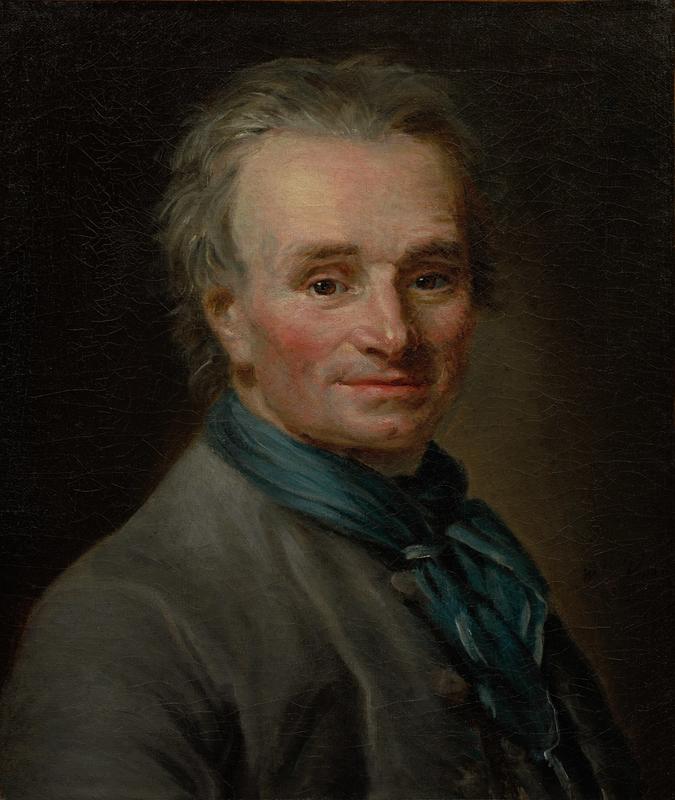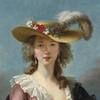More about Portrait of Jean-Baptiste Lemoyne the Younger

Contributor
Élisabeth Louise Vigée-LeBrun’s Portrait of Jean-Baptiste Lemoyne the Younger is the 18th- century version of asking your friend to take a cute candid of you.
“Work clothes, hair grey, chilling with no wig on - that’s when you’re the prettiest, I hope that you don’t take it wrong,” sang Élisabeth Louise Vigée-LeBrun when she painted this portrait of Rococo sculptor Jean-Baptiste Lemoyne the Younger. Well, she meant it, even if she didn’t rap it. Typically, eighteenth-century French portraits portrayed official-looking people in their most expensive clothing and serious poses - a la Portrait of Louis XIV. However, in this work, Vigée-LeBrun offers us a significantly more relaxed subject. Lemoyne wears his casual sculptor’s garb rather than what would have been a very on-trend knee-length coat, breeches, and waistcoat decked out in lace frills. With a smize to make Tyra proud, Vigée-LeBrun reveals Lemoyne’s sense of humor, confidence, and comfort with the artist through his soft smile and kind eyes.
Taking inspiration from a well-known pastel portrait by Maurice-Quentin de La Tour of an even younger Lemoyne, Vigée-LeBrun mimics the informality of the pastel medium but adds more detail to her painted work. Pastel portraits were extremely popular in the 18th century due to their ease to create, accessibility to buyers, and aesthetic properties, however, oil painting was considered the highest form of art. The casual depiction of Lemoyne and the soft handling of the paint reflect the influence of pastels - Vigée-LeBrun’s OG artistic medium. In her memoir, Vigée-LeBrun describes dinner parties she and the famous pastel portraitist de La Tour both attended where guests had to sing for their dessert; “we laughed, we had fun.” Who wouldn’t?!
The less official nature of this portrait can also be attributed to the closeness of the artist and subject. A famous portrait artist himself, Lemoyne understood the challenge in capturing the likeness of a sitter. In his portrait busts, Lemoyne was famed for his ability to depict subtle expressions and movement in his subjects. He was especially favored by Madame de Pompadour, King Louis XV’s official chief mistress (like Facebook official, but different). He created life-size sculptures of her favorite mythological stories, using her face and body for the female characters, as seen in his Vertumnus and Pomona now in the Louvre. Many of Lemoyne’s more important works have been destroyed or disappeared during the French Revolution. Lemoyne and Vigée-LeBrun would eventually share a famous patron - Marie-Antoinette.
Vigée-LeBrun completed this portrait when she was only 17. By then she was an old pro, having already been painting portraits professionally since her early teens. In contrast, Lemoyne was 64 at the time of this portrait and nearing the end of his career. His bemused and relaxed demeanor may reflect his contentment at his illustrious career and upcoming retirement.
Sources
- “Introduction to 18th-Century Fashion,” Victoria and Albert Museum, Last modified April 25, 2013. www.vam.ac.uk/content/articles/i/introduction-to-18th-century-fashion/#….
- “Jean-Baptiste Lemoyne.” National Galleries Scotland, Accessed January 29, 2021, www.nationalgalleries.org/art-and-artists/artists/jean-baptiste-lemoyne.
- “Portrait of Jean-Baptiste Lemoyne the Younger,” Cleveland Museum of Art, Last modified January 11, 2021, www.clevelandart.org/art/2011.49.
- Shelley, Marjorie. "Painting in the Dry Manner: The Flourishing of Pastel in 18th-Century Europe." The Metropolitan Museum of Art Bulletin 68, no. 4 (2011): 4-56. Accessed February 3, 2021. http://www.jstor.org/stable/23036719.
- Stokstad, Marilyn. Art History. Pearson/Prentice Hall, 2008.
- Vigée Le Brun, Élisabeth Louise. Memories of Madame Louise-Élisabeth Vigée-Lebrun. Urbana, Illinois: Project Gutenberg. Retrieved February 3, 2021, from http://www.gutenberg.org/files/23019/23019-h/23019-h.htm











